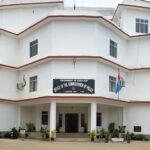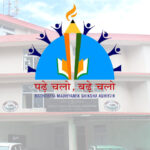Sentilong Longkumer | Lumami | September 19
The department of Botany, Nagaland University in commemoration of 25 years of the department has organized a three-day International Conference on Bio Resources & Economy in collaboration with Nagaland Forest Management Project (NFMP), Department of Environment, Forest and Climate Change, Government of Nagaland and SERB, Government of India which began today at I. Ihoshe Kinimi Hall, Nagaland University, Lumami.
The conference is being attended by eminent scientists and scholars from both national and foreign institutions wherein more than 160 presentations will be presented during the three-day conference.
The inaugural program was graced by the presence of Prof. K. Kannan and Prof B.K. Konwar, Former Vice-Chancellors of Nagaland University, as the guests of honour.
As the keynote speaker, Dr MD Aslam, former advisor, Department of Bio-Technology and Consultant, DBT, North East Region- Bio Technology Program Management Cell (NER-BPMC), stated that according to the India Bioeconomy Report 2022 of BIRAC— in India, the bio-economy has reached over 80 billion US dollars in 2021, representing a 14.1% increase over 70.2 billion US dollars in 2020. He also stated that India’s Bioeconomy objective has been raised from $150 billion USD in 2025 to $300 billion USD in 2030.
Dr. Aslam, speaking on the subject Himalayan Bioresource Mission towards Bioeconomy (Developed and implemented by IBSD-ILS Joint Centre), stated that the Himalayas are one of the world’s biodiversity hotspots, and that rich bioresources have great economic value, as well as enormous potential for strengthening the region’s bio-economy.
He stated that the Mission Program is intended to be translational and transformative in order to provide enormous opportunities to empower communities for the efficient use and value-addition of bioresources in order to produce value-added products leading to bioresource-based enterprises for the socioeconomic upliftment of the entire Himalayan region, as well as to connect the Eastern Himalayan Region (NER) with the Western Himalayan Region.
The structure of the mission program has five verticals – Plant Resources (including Agri, Horti resources, etc.), Animal Resources (including fisheries, wild life, etc.), Microbial Resources (including extremophiles, food microbiology, etc.), Medicinal and Aromatic Plants (including phytopharmaceuticals, nutraceuticals, etc.) and Bioresources for Livelihood Security / Societal Relevance Program, Training and Capacity Building.
Earlier, Supongnukshi IFS, Chief Conservator of Forest briefed on the Nagaland Forest Management Project while Prof. K. Kannan and Prof B.K. Konwar, former Vice-Chancellors of Nagaland University, Prof. N.S. Jamir, Founder Member, Department of Botany and Prof. M.S. Rawat, Dean, School of Sciences, NU exhorted briefly and Prof Jagadish Kumar Patnaik, the Vice-chancellor of NU, gave the inaugural address.
An ‘Abstract’ was also released during the program.




